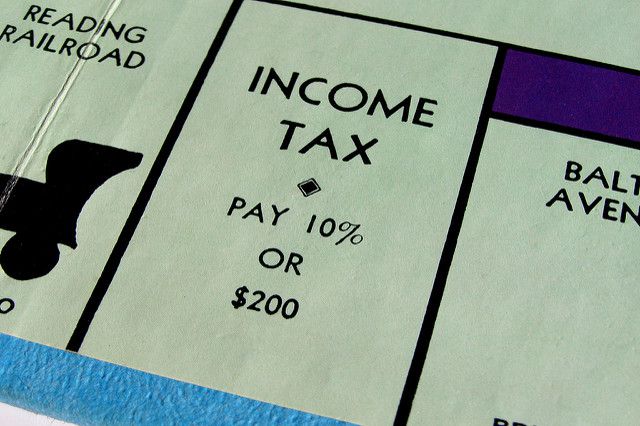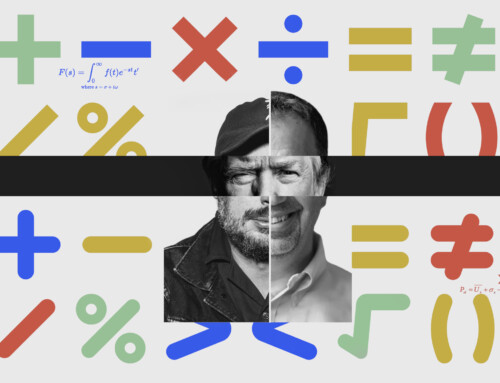Rubaiyat Tasnim and the ESG
April 12, 2018
On February 28, 2018, the Graduate Center Public Programs and the Stone Center on Socio-Economic Inequality held a panel on tax reform where experts discussed its implications and how it will impact different constituencies. Panelists were: Larry Kotlikoff, the William Fairfield Warren Professor and Economics Professor at Boston University; Lily Batchelder, the Frederick and Grace Stokes Professor of Law at NYU School of Law and Professor at the NYU’s Wagner School; Leonard Burman, co-founder of the Urban-Brookings Tax Policy Center, the Paul Volcker Professor and Professor of Public Administration and International Affairs at the Maxwell School, and a Senior Research Associate at the Syracuse University; and the Nobel Laureate Paul Krugman, a Distinguished Professor of Economics at the Graduate Center and New York Times columnist. The discussion was moderated by Kathleen Hays, global economics and policy editor at Bloomberg.
Statements by Panelists on the Tax Bill
Paul Krugman started off the discussion by questioning why we are cutting taxes at this point in the business cycle. The US economy is at full employment and the government is in deficit. As the US population is growing older, the burden of maintaining programs such as Medicaid, Medicare, and Social Security is growing as well. The tax cut is only worsening our fiscal condition.
Leonard Burman stated that the tax system needs to be reformed and pointed out the problems of the current system including its inefficiency, complexity, unfairness, and inability to raise enough revenue for the government. The Congressional Budget Office has projected 10 trillion dollars in deficits over the next decade. The US corporate tax rate is high compared to other nations, but the tax bill cut the tax rate for unincorporated business as well which is not very high relative to other countries. The bill succeeded in giving the Republican Party a legislative victory which not only helped them undermine the Affordable Care Act but might also behave the way Reagan’s 1981 tax cut did – it may distort the tax code much more to generate momentum for another tax reform in five years.
Lily Batchelder started her introduction by stating that she has been a fan of tax reform but it is setting out to do the exact opposite of what she was expecting. The tax reform should have addressed the long-term fiscal issues through generating more revenue. The bill is very heavily tilted towards tax cuts for the wealthy. As it is increasing the deficit, it is putting social programs in danger in the future. She highlighted the biggest new loophole in the code: The new pass through deduction cuts taxes for unincorporated businesses and greatly complicates the administration of the tax code to try to ensure that individuals do not form an unincorporated business to avoid the higher individual tax rate.
Laurence Kotlikoff agreed with other panelists about the current condition of US economy, and noted that enormous amounts of off the book debt and contingent liabilities, which when properly accounted for, makes it a 200 trillion dollar debt rather than a 20 trillion dollar debt. He believes the tax reform has positive elements and that there will be a significant increase in capital formation in the country, a 15% increase over time and a 5 and half percent increase in wages, which would offset the increase in debt to GDP ratio. The unfunded liabilities grow by about 6 trillion dollars per year, which compared to the increase in debt of about 1.6 trillion dollars in 10 years is much more substantial. He argued that the tax reform did not increase inequality. As the share of spending of the top 1% within each group will not change at all, he states that the tax reform is fair. The absolute amount of tax benefits for richer will be higher as they pay higher taxes.
Supply side: Will the companies invest more and create more jobs?
L. Kotlikoff argued that as the marginal corporate tax is lowered from 34.6% to 18.8%, a lot of capital from abroad will come in and will be staying in the US. This will impact wages by increasing them by 5.5% over the next ten years. The consumption rate is extremely high, with national saving rate at only 4%, and with a domestic investment rate of 5%, only 1% of national income is being invested from abroad into US. As the country saves too little, the reform will help move capital from abroad.
P. Krugman agreed with L. Kotlikoff that it will attract capital from abroad, but believes it will take a long time. If the bill works, it will still nonetheless produce huge trade deficits for a decade or more. This trade deficit will lead to strong dollars which will deter investments. The corporate profits in US are a return to monopoly power. As taxes are cut on monopolies and new investments are not generated, this will increase wages. As more capital moves from all over the world to the US, it will raise the return on capital all over the world. With more capital from abroad being invested, the returns paid to them will increase and the net benefit to the residents will be only the tax wedge. Foreigners already own a third of equity in US and this tax reform cuts taxes on that. Keeping all these factors in mind, this tax reform will fail to increase income and it will only exacerbate the deficit problem.
L. Batchelder pointed out how there could have been a way to do business tax reform that could help the economy in the long run. This bill loses a huge amount of revenue and may not have been a good time to act on an economic stimulus. The positive growth effects of the tax reform disappear and potentially reverse. Raising taxes in the future or cutting spending programs may be necessary to pay for the tax reform and will likely put a drag on growth.
L. Burman added to these points by stating how the models developed by the Joint Committee on Taxation do not produce the big macro effects advocated by the supporters of the tax reform. The bill allows firms to immediately deduct the cost of new investments, called expensing. Theoretically, this will encourage them to invest more, make workers more productive and could raise wages. Empirically, there has not been a huge response to tax reforms in many countries or even within the United States. The tax rate cut to foreign holders of US equities will only benefit the foreign equity holders. He gave the example of 1986 corporate tax rate cut which led to other US trading partners to cut their tax rates in response, eventually reducing the effectiveness of tax rate cuts.
What Is the Tax Reform’s Impact on the Economy and Will It Benefit All?
P. Krugman stated that the tax reform will lead to more spending. But it would have been better to have done that when the unemployment rate was 9.5% rather than now. The fast economic growth will also see a hike in interest rates by Jay Powell, the new chairman of the Federal Reserve, which will limit the effect of the tax reform. So, the increase in consumer confidence will not initiate much growth. The deficit spending in a full employment economy will react differently than deficit spending in a depressed economy. Orders for new capital equipment, which is the first early indicator of an investment surge has not gone up yet.
L. Burman, addressing the stock market rise, stressed the point that the increase in profitability is from the companies making decisions assuming a tax rate of 35%. The value of the profitable companies go up when the income is taxed at 21%, which is a one-time shift and unlikely to continue. The observation that a lot of the companies are paying bonuses and wages are going up are not anomalies at this stage of economic cycle. As the labor market is getting tighter, the companies are competing to keep their workers through bonuses.
L. Batchelder distinguished between the direct and indirect effects of tax bill. She terms this bill as an “incredibly regressive bill” when considering the direct effects on employee compensation or wages. As an example, the average tax cut for a household with $40-50,000 is about $400, while a household with a million dollars’ income gets a tax cut of $27,000. Adding on the indirect effects, as calculated by JCT, 25% of all corporate tax cuts benefits labor. Incorporating all these effects, the tax cuts for the wealthy is three times larger than they are for the middle class. As the individual provisions expire, every income group earning less than $75,000 on average loses out.
L. Kotlikoff disagreed arguing that the tax reform is not regressive. He explained that the same tax rate cut for rich means a bigger absolute tax break, as they earn more to begin with. Looking at the inequality in spending, the share of spending in the top 1% in any age-cohort remain unchanged and so does the share of taxes they pay. He terms the tax reform as a “second-rate reform,” because it failed to raise revenue and will undermine public education and Obama Care, leading to another 10 million people being uninsured. He emphasizes comparing people within their age group when comparing taxes paid.
P. Krugman focused on the lost revenue that has to be offset by spending less on social programs. So, the effects on the after-tax-and-transfer distribution of income makes the tax reform regressive, impoverishing the government even further.
L. Kotlikoff stated that despite some simplifications in the tax code, the pass-through still remains complicated.
Batchelder stated that the pass through deduction opens up huge gaming opportunities. She added that the pass-through deduction is providing the largest benefits to the wealthy, with the top 1% earning 50% of the pass-through business income. A pass-through business refers to certain ways to organize a business in which profits are immediately passed through to owners and are subject to the individual-level tax but not a corporate –level tax. These business forms include sole proprietorships, partnerships, and S-corporations. The pass-though deduction allows these businesses to write off 20% of business income to try to make up for the higher individual tax rate that pass-throughs are subject to but also limits the deduction. The limitations are complex and this creates more complication than simplification.






